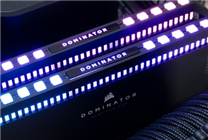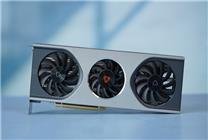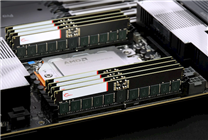DDR5 Memory Overclocking Achieves New Heights: 13010MT/s Confirmed
Summary:
- A group of experts has successfully overclocked DDR5 memory to an impressive 13010MT/s.
- This feat, however, is not yet recognized in HWBOT rankings, due to potential instability.
- The overclocking setup featured advanced hardware and liquid nitrogen cooling, underscoring its non-standard use case.
In a groundbreaking achievement reported around mid-October, a coalition of overclocking specialists reached an astonishing memory speed of 13010MT/s using DDR5 technology. This accomplishment marks a significant milestone in the world of high-performance computing, pushing the boundaries of what is technically achievable.
Record-Setting Performance: Background
The recent overclock was notably conducted with an Intel Core Ultra 9 285K processor paired with Corsair memory and a Gigabyte Z80 AORUS Tachyon motherboard. The AORUS Tachyon motherboard, designed explicitly for record-breaking performances, provided the foundation necessary for this extraordinary feat. Additionally, the use of liquid nitrogen cooling highlighted that such configurations are primarily suited for extreme performance scenarios and not intended for daily tasks.
Hardware Insights
The unique configuration leveraged a 2+2 core processor setting. In this instance, only a portion of the cores were active, maximizing the overclocking potential without engaging the entire capacity of the CPU. The DDR5 memory operated in a single-module capacity of 24GB, configured with timings of 68-127-127-127-2. These specific settings were crucial in reaching the record overclock speed while maintaining stability under demanding conditions.
The State of Overclocking Recognition
Despite the impressive nature of this achievement, it remains excluded from the official HWBOT rankings. This absence indicates that while the performance metrics have been demonstrated, they may suffer from instability or fail to comply with certain industry regulations. Consequently, the highest officially recognized overclocking speed for DDR5 currently stands at 13010MT/s, according to HWBOT data.
The Implications of Overclocking Advancements
The progression in memory speeds, particularly in DDR5 technology, signifies a larger trend in computing performance enhancement. Elevating memory speed can result in significant boosts in overall system performance, especially in applications that demand high bandwidth. Overclocking becomes an essential tool for enthusiasts and professionals alike, particularly in the realms of gaming, scientific computing, and data analysis.
Exploring Future Potentials
As technology continues to advance, the pursuit of achieving even higher memory speeds will remain a priority for the overclocking community. With innovations in motherboard design, processor architecture, and cooling solutions, the potential for reaching new milestones appears promising.
Closing Thoughts
The achievement of reaching 13010MT/s in DDR5 memory overclocking serves as a testament to the commitment and expertise within the overclocking community. While the journey towards official verification in HWBOT rankings continues, this record not only showcases technical capabilities but also sets a benchmark for aspiring overclockers worldwide. As both amateur and professional enthusiasts explore the limits of technology, the possibilities for further advancements remain virtually limitless.
In conclusion, while this specific record might not hold official recognition, it highlights the ongoing evolution of memory technology and the relentless pursuit of excellence in performance optimization. The future of DDR5 overclocking promises to be exhilarating, filled with both challenges and remarkable achievements as the community eagerly seeks to push performance boundaries even further.







